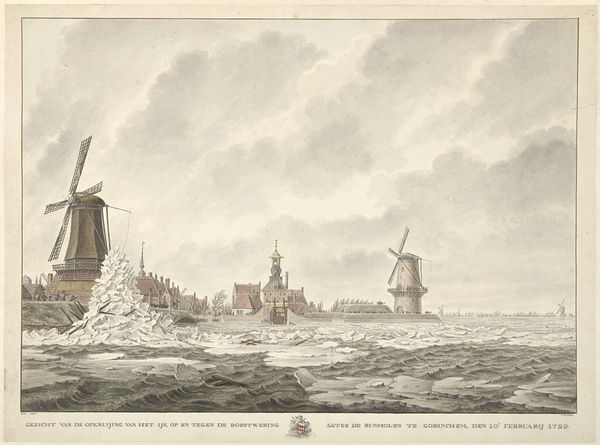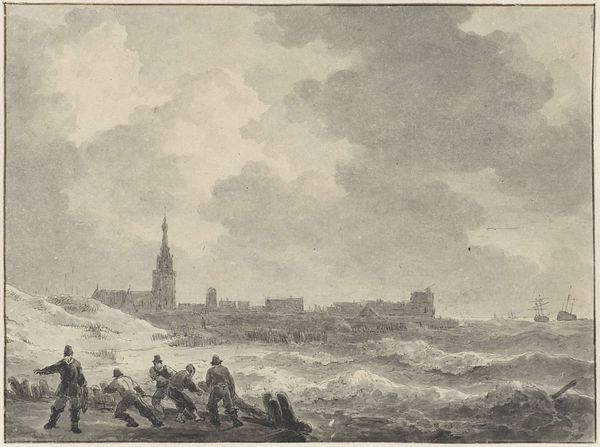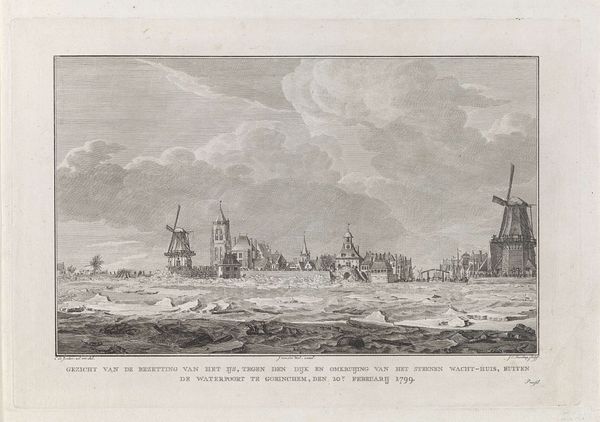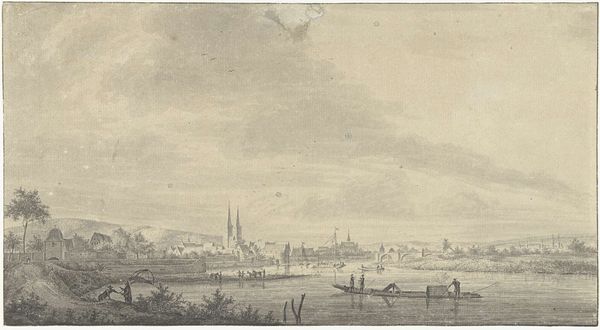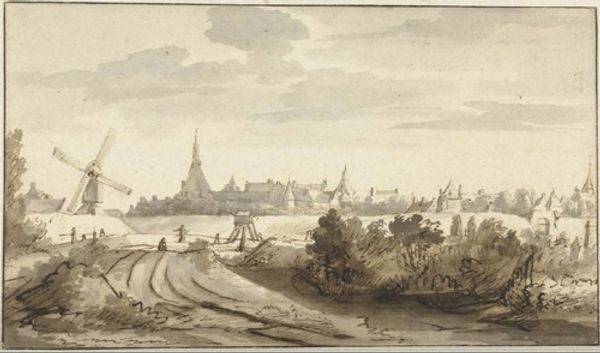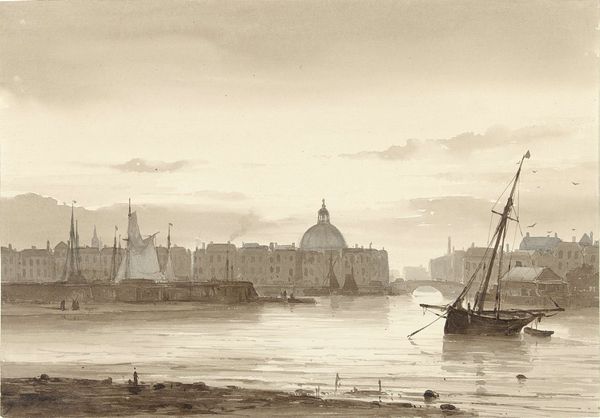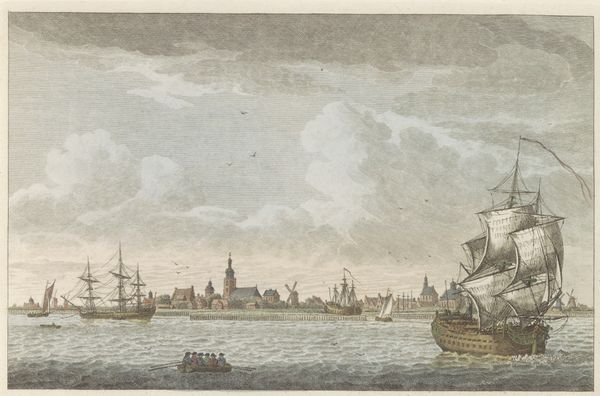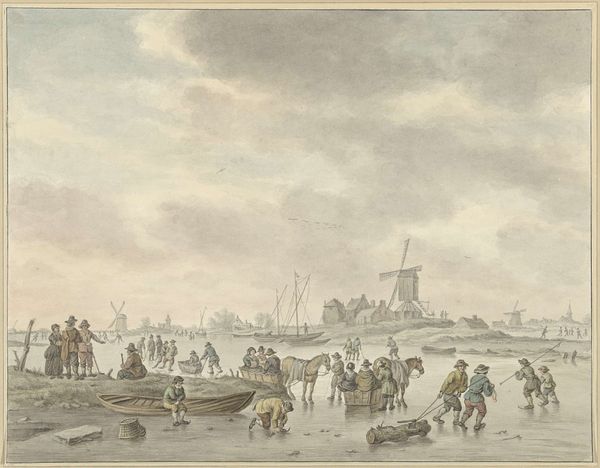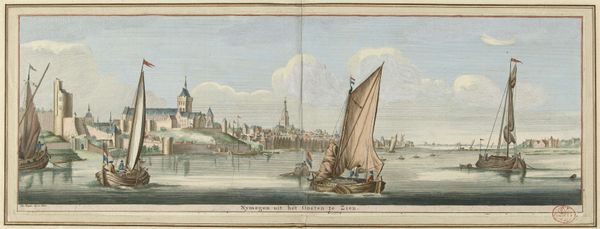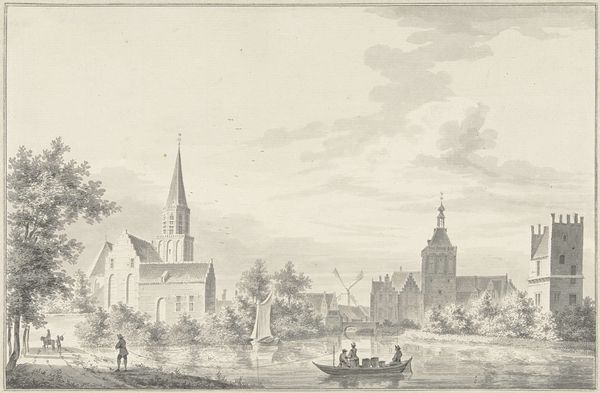
Gezicht van de bezetting van het ijs buiten de Waterpoort te Gorinchem, den 20.n Februarij 1799 1807
0:00
0:00
cornelisdejonker
Rijksmuseum
watercolor
#
aged paper
#
landscape
#
watercolor
#
romanticism
#
19th century
#
cityscape
#
genre-painting
#
watercolor
Dimensions: height 453 mm, width 600 mm
Copyright: Rijks Museum: Open Domain
Editor: Here we have Cornelis de Jonker's 1807 watercolor, "View of the Ice Blockade outside the Waterpoort at Gorinchem, February 20, 1799," housed at the Rijksmuseum. It has a rather bleak, almost melancholic feel to it, doesn't it? All that ice, the muted tones... What catches your eye most about this piece? Curator: Ah, yes, bleak but beautiful, wouldn't you say? What fascinates me is how de Jonker captures the stillness within the turmoil. The ice, fractured and chaotic, mirrors, for me, the political upheaval of the time. The late 18th century, especially in that region, was anything *but* stable. I can almost *feel* the frozen anxiety of a city under pressure. The precision in his line-work is almost at odds with the churning landscape of ice... does it hint at an emotional chill? Or is there simply nowhere for the people of the city to turn during this time? Editor: So, you’re saying the frozen landscape acts as a metaphor? Like, the ice embodies that sense of unease during the French occupation? I hadn't considered that. Curator: It certainly sings to me that way. And notice the sky! See how it presses down, almost suffocating the scene? But there's still light on the buildings... life continues. Perhaps hope persists, or *persisted.* How different would it be if the weather had suddenly been warm that day? De Jonker may have shown quite another vision, do you think? Editor: Good point. It really adds to the oppressive feeling. That delicate contrast makes a big difference. I really learned how setting and landscape could reflect human anxiety here. Curator: Precisely! Art offers reflections; what matters, though, is which facets catch *your* eye! Now tell me what similar observations can you find in the paintings of Caspar David Friedrich.
Comments
No comments
Be the first to comment and join the conversation on the ultimate creative platform.
